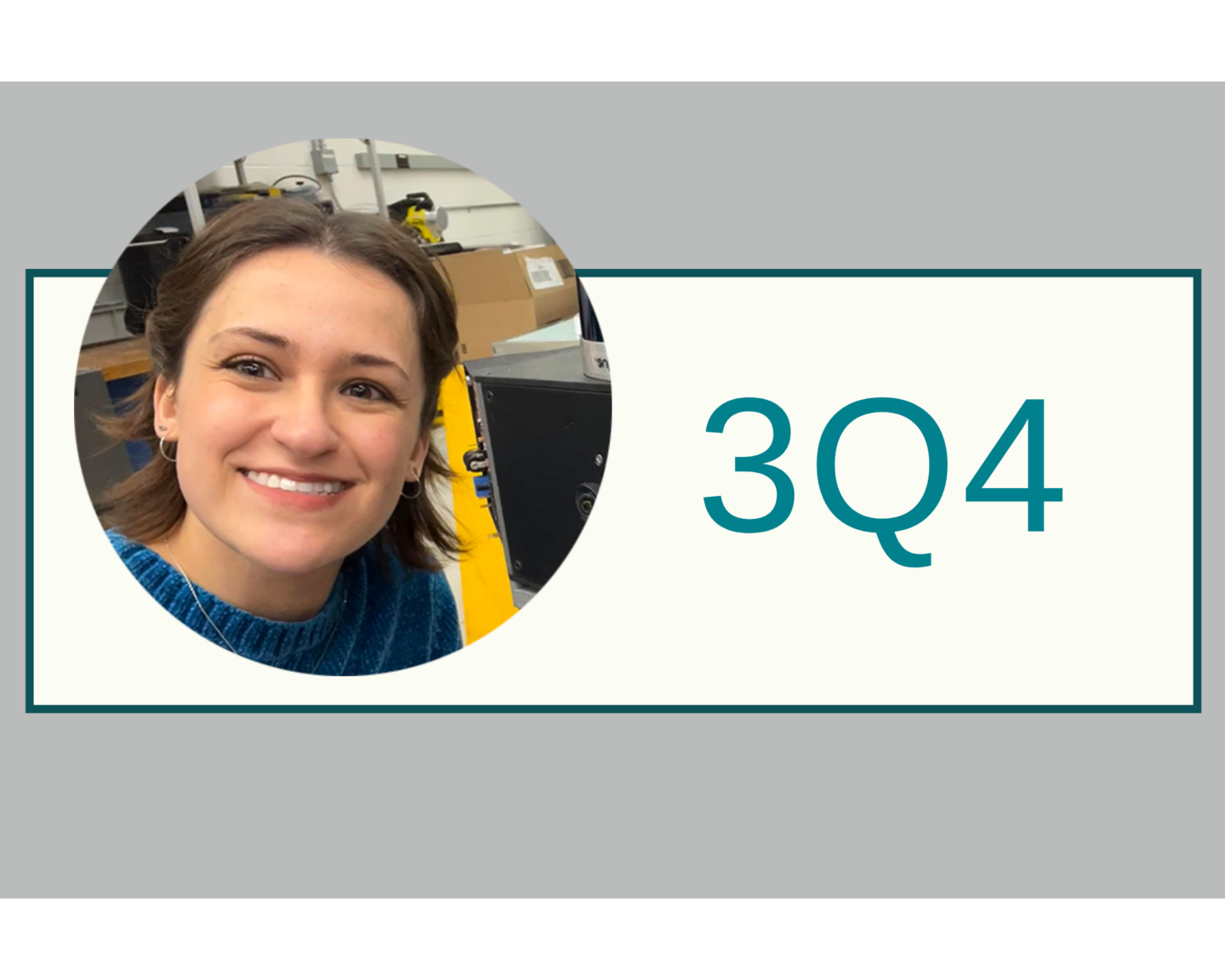Hannah Parrilla works in the Lab’s Nuclear Science Division in the applied nuclear physics program, working on mapping radiation in complicated environments. Her work involves integrating sensors that help to produce 3D representations of where radiation is located.
Hannah always pictured herself as a scientist, even as a young child. “I saw a book in the library that had cool pictures of a nebula on the cover. The book was geared toward adults, but I begged my mom to check it out, and it became my bedtime storybook. The pictures drew me in, but I liked learning about the planets and stars, although I’m not sure my mom enjoyed reading 30 minutes every night from a textbook.”
Hannah thought that her early interest in the planets might lead to a career in astronomy, but she ended up loving anything in physics. She earned her undergraduate degree in physics from Case Western Reserve University and is working on her master’s in applied physics at Johns Hopkins University through the Lab’s Tuition Assistance Program.
Q: You are active in the Lab’s All Access Employee Resource Group. What motivates you to work with the ERG?
A: The All Access Neurotypes Accessibility Committee is one of the Lab’s newer groups. Its goal is to create connection and community among neurodivergent Lab employees and increase accessibility for all neurotypes. The group holds social and educational events and will recommend ways the Lab can support all neurotypes.
We share information with the broader Lab community. For example, we recommend that supervisors show employees as much flexibility as possible by discussing how they like to work and asking for suggestions about the when and where of work. Some people need quiet options, while others might need fewer distractions. Open communications are critical, as is normalizing differences. A basket of fidget items on a conference table goes a long way to making people feel included since it normalizes the use of fidget items for all meeting participants. I was motivated to co-found the committee as a neurodivergent scientist who felt like they needed a space like this, and since then, I have been motivated by seeing its impact on people of all neurotypes at the Lab.
Q: You also volunteer to work with students in the Lab’s K-12 programs. How have your work and your studies in applied physics influenced your work with students?
A: I work with students through the K-12 programs at the Lab, and the students readily engage when I talk about applied physics since they can see how things happen in the real world rather than try to understand it through equations. For example, I show the robot dog used in our group to deploy our sensors for radiation mapping. That robot draws them in, and then I can explain the sensor system and how it works.
Q: The saying is if you met one neurodivergent person, you’ve met one person. What have you learned about the differences and similarities of neurodivergent people?
A: I was not that fidgety child you often see portrayed when talking about neurodivergent people. I was the opposite. I was painfully still because I was afraid of being in trouble. Many of our neurodivergent colleagues mask or suppress their behaviors since they don’t want to be seen as different. Some groups are often more conditioned to do this, and learning to mask at a young age can make it more challenging to get a diagnosis. With or without masking, a person may appear standoffish when you meet them, but it may be the fear of not knowing how to talk to people. Others might overtake conversations, but it might be because they are really excited to talk about their interests and make connections. It’s nice to be in a group that understands that social interactions are not always the same for everyone and to spend time with people who don’t get offended by behavior that is outside the norm.
Some research shows that autistic students lean toward STEM careers, so it’s not surprising to find that many Lab colleagues are neurodivergent.
Q: In 2011, Autism Awareness Month became Autism Acceptance Month. Why the change?
A: A group of autistic people made the change because they wanted to go a step further. Most of our perceptions have been shaped by media portrayals, but those who are autistic want people to understand that the population comes with individual strengths and weaknesses. The month is a time to celebrate the differences and the contributions. But we don’t want to dismiss the hardships that many autistic people have endured because of their neurotype. Society’s expectations can add stress, and we want to provide the space to cast off some of those expectations.
Even if you don’t identify as neurodivergent, all Lab staff are welcome to attend our events and meetings. Most of us know someone, a colleague, a friend, or a family member, who is neurodivergent, so everyone is welcome. It’s a community of acceptance.
An event I’m excited about this month, April 30, is our show-and-tell on sensory tools. We will have some there, and people will bring others they’ve found useful. Not everyone understands the role of comfort items, but by sharing them, we can educate others and normalize the experience. It’s common for people to use a comfort item and not even realize its role as a centering or soothing presence.
Events are important because they are a chance to meet colleagues. Those who are not neurodivergent walk away with a new perspective. They often had that media model in their heads, and after an event, they could better see the similarities and appreciate the differences.
Resources
2025 Autism Acceptance Month webpage
Neurotypes Accessibility Committee webpage
Videos that highlight lived autistic experiences:
